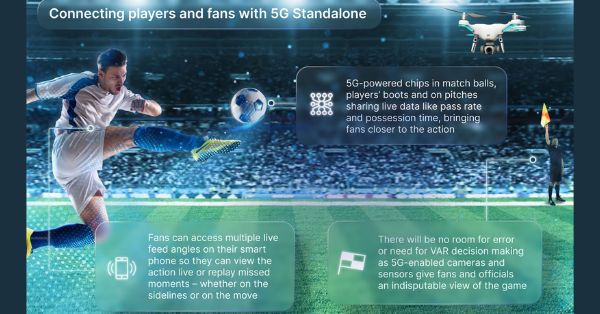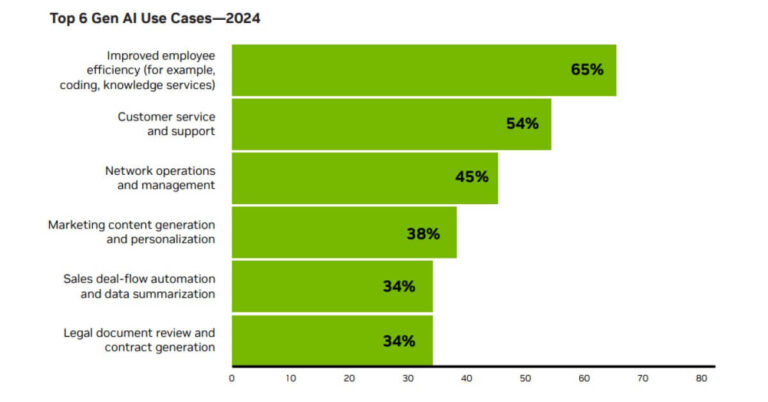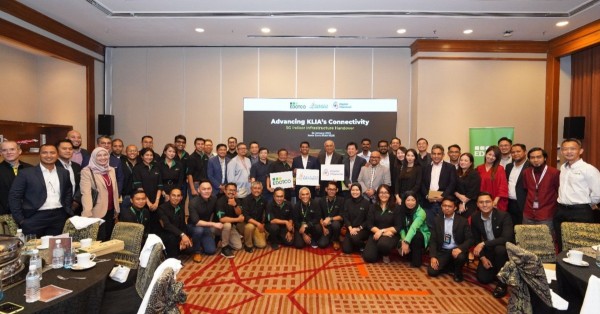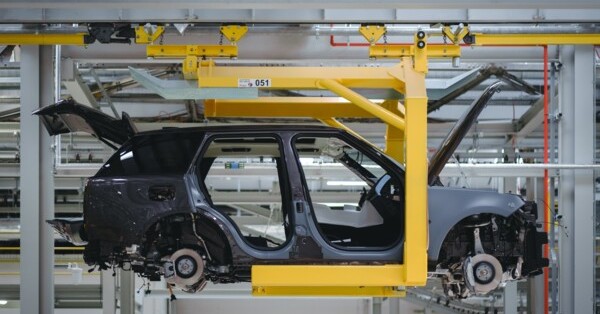We’ll see the end of Video Assisted Referee (VAR) and poor off-side decision-making thanks to smart ball tech, pitch sensors and player wearables enabled by 5G Standalone (SA) – meaning more time is devoted to the beautiful game and less time on disputes.
Connected clothing will mean trainers will ‘talk’ to each other and collate style and sustainability-inspired looks from other feet on the street, powering your very own AI-powered style guide – enabling fashionistas to discover styles and express themselves in new ways.
Working with Vodafone, in a new report released today, leading futurist Andrew Grill predicts how 5G SA could transform the things the UK loves most in the next five-to-seven years – from retail and sports to gaming and entertainment.
The report supports the growing need for 5G SA infrastructure in the UK, as the proposed Vodafone and Three merger paves the way for UK 5G SA leadership with a pledge to invest £11 billion and reach over 99% of the UK population with 5G SA by 2034.
18 January 2024 – In the next five-to-seven years, 5G technologies will transform the UK. Vodafone has partnered with leading futurist Andrew Grill – the Actionable Futurist – on a new report ‘Living in the Moment’, which includes Andrew’s top five predictions for 5G:
1. A boost to the beautiful game as offside decision-making and incorrect Video Assistant Referee (VAR) decisions will be a thing of the past. The impact will transform sports, as more time is devoted to game play and less to disputes. There will be no room for error as 5G SA-powered chips in match balls, players’ boots and on pitches, coupled with multiple angle live feeds from agile robotic cameras which fans can access from their smart phones, will make VAR redundant. What’s more, by giving everyone access to real-time highly-accurate data, both the referee and the fans – in the stadium and at home – will know whether a pass was off-side or if a poor tackle deserves a free kick, live – bringing sports fans closer to the action than ever before.
2. Taking smarter steps with talking trainers and connected clothing powered by 5G, will enable people to co-create their own personal AI-powered style guides helping them express themselves in new ways. Through embedded chips or chiplets, smaller than a 1p coin, connected garments like trainers will ‘talk’ to other each other as wearers pass in the street. They’ll hold data on your individual style – your preferences, budget and lifestyle – and collect insights on what new ‘looks’ similar shoppers are trying out. These insights will power a personal AI style guide. By using the predictive power of platforms like ChatGPT, it’ll suggest new looks, brands or designers for you to experiment with and products to try out.
3. Ultra-personalised and sustainable cosmetics, made on demand, will become mainstream in the next ten years. You’ll be able to scan your own skin, or a colour you want to match, on-the-go using smartphone apps and then create a bespoke beauty product, such as a lipstick, using a combination of 5G, 3D printing and AI technologies. This will create less wastage, as people only produce the shade and amount they need by sending a digital request to a pop-up 3D printing concession in a department store, which can then print the product in as little as three minutes. Adoption of these technologies will support the rise of sustainable consumption, as brands and consumers only order and manufacture exactly what shoppers need, in made-to-measure sizes and recyclable packaging.
4. Viewers will become producers as watching our favourite shows evolves into an immersive experience. Take a show like ITV’s reality TV dating programme Love Island, for example, which attracts millions of British viewers every year. In the future, during the programme, viewers could select which pair of contestants they want to ‘couple up’ using their smartphone or smart TV. Producers will then, thanks to a 5G SA network, be able to use real-life footage of the contestants alongside AI-generated content to generate endless different, personalised outcomes based on the choices of the viewer – blending the real-life elements of the show with AI-generated life-like scenarios.
5. On-the-go entertainment and gaming will be everywhere. Thanks to the increased bandwidth of the 5G SA network compared to 4G or 5G, those commuting from the countryside, for example, can watch high-definition Netflix or Amazon Prime movies on the train. What’s more, this won’t just be on screens – palm-sized devices will project images and video onto any available surfaces. Looking even further ahead, we could see autonomous cars become ‘movie theatres on the move’, as passengers will be able to spend long journeys enjoying high-quality entertainment powered by 5G SA. For gamers, they can play Triple-A console-level games when they’re out and about – democratising gaming for the masses by ending the need for high-end gaming PCs to access competitive and graphically-demanding games – and ultimately give way to new gaming formats and genres.
Read More news – Vodafone UK News Centre
























